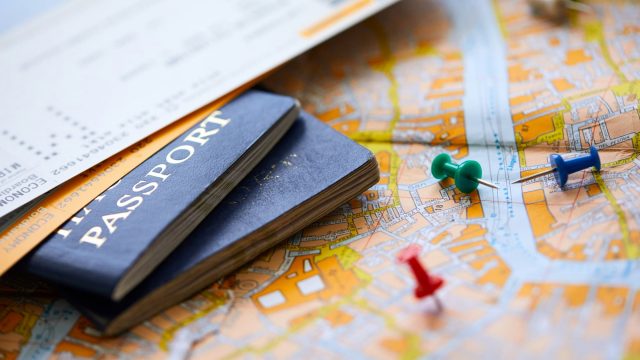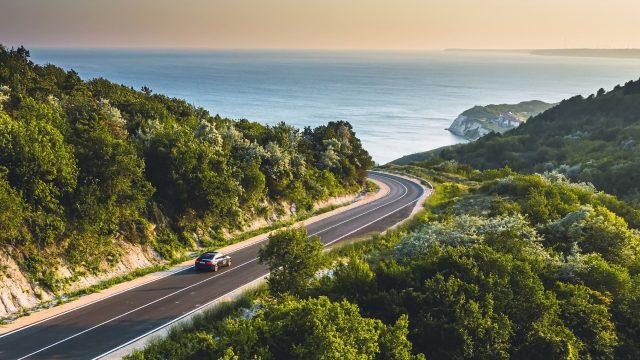There are some fantastic examples of archaeological sites in Lisbon; some are within the city itself and others are dotted around the district. Some date to periods Before Christ, others tell of the earliest settlements that went onto form Lisbon. See some remaining traces of the devastation caused by the earthquake in 1755 and the treasures it unearthed. Read our guide to the places across the district of Lisbon where you can expect to find archaeological delights.
 Jerónimos Monastery. Photo by: Marie-Jo Golovine/Fotolia
Jerónimos Monastery. Photo by: Marie-Jo Golovine/Fotolia
Within the city
Museu Nacional de Arqueologia (National Archaeology Museum)
Jerónimos Monastery, Praça do Império, 1400-026 Lisboa
José Leite de Vasconcelos founded this museum in 1893 and since 1903 it’s has been part of the Jerónimos Monastery. Due to its extensive collections and access to resources, it’s the most important centre for archaeological research in Portugal. With the best collection of Portuguese mosaics and other finds from all over the country, it’s well worth a visit. It has two permanent exhibitions; Egyptian Antiques, and Treasures of Portuguese Archaeology. Key finds include Visigothic jewellery, Roman ornaments, and early 8th century Moorish artefacts along with other examples of metalworks from the Bronze and Iron Ages. There is also a library which specialises in archaeology and is open to the public.
Nucleo Arqueologico da Rua dos Correiros (NARC)
Rua dos Correeiros, nº 21 (NARC entry) or nº 9 (reception desk), 1100-061 Lisboa
The Millennium BCP bank on Rua Augusta, made an unexpected discovery while planning to build an underground car park. Workers revealed Roman ruins as they began to excavate the area. Funding from the bank has kept the discovery open to the public with guided tours available on the hour. Whilst booking in advance is not usually necessary, it’s best to call and see when the English tours are held each day as this varies depending on demand. A small exhibit is on display before you enter which highlights key finds and shows the excavation process. You should be prepared for tight walkways and low ceilings. Access is near the bank, look for a sign outside and if you can’t find it, just ask in the bank.
Another historical treat is located nearby. If you’re visiting at the wrong time, you may not be able to visit. The 1755 earthquake exposed Roman galleries under the streets. There is much mystery still surrounding the use for these. For only 3 days in the year, the water level recedes enough to make the passage walkable. Entry is through a trapdoor in the street.
Museu Arqueológico do Carmo (Carmo Archaeological Museum)
Convento do Carmo, Largo do Carmo, 1200 -092 Lisboa 1200 -092 Lisboa
Another victim of the 1755 earthquake, Carmo Convent stands proud, roofless and unrepaired as a reminder of the disaster faced by Lisbon. In the nave and apse, you’ll find further examples of archaeological finds. An excavation of a fortress near Azambuja found examples dating back to 3500BC which can be seen at the museum here. There’s also some royal tombs, azulejos (glazed tiles), shrunken heads, and mummies. Music and theatre events also take place in the ruins.
 Carmo Convent. Photo by: tichr/Fotolia
Carmo Convent. Photo by: tichr/Fotolia
Museu da Água (Water Museum)
Rua do Alviela, 12 1170-012 Lisboa
This museum incorporates 4 sites across Lisbon and aims to educate visitors on water in general but also the history behind Lisbon’s aqueducts. A permanent exhibition is inside the Barbadinhos Steam Pumping Station but other sites covered are open for tours;
- Barbadinhos Steam Pumping Station
- Águas Livres Aqueduct
- Mãe d’Água das Amoreiras Reservoir
- Patriarcal Reservoir
- Loreto Gallery (underground path)
The Water Museum is the only museum in Portugal that holds the Council of Europe Museum Prize. Head out on one of the tours to see historic features.
Outside the city
Outside the main city of Lisbon, other archaeological sites can be visited. Bear in mind that some of these have had more excavations done than others so be sure what you’re looking for to avoid disappointment. Some sites have better unearthed remains than others.
Alto da Vigia – This was Portugal’s first archaeological discovery and was heavily visited by local people and royals during the Renaissance period. The remains are believed to be of a Roman sanctuary and watchtower. The Archaeological Museum of Sao Miguel de Odrinhas began excavations in 2008 whereby an Islamic convent was found. You can locate the site along the Praia das Maçãs in Sintra.
Co-ordinates: 38°49′27.2″N 9°28′22.5″W
Castro of Vila Nova de São Pedro – Excavators found an important collection of thousands of arrowheads here at the site in Azambuja. Key finds within the castle ruins since its discovery in 1936 include traces of a domed oven or kiln and various pieces of pottery.
Co-ordinates: 39°13′11.16″N 8°50′25.33″W
Castro of Zambujal – This is the most northerly discovered Copper Age site and is of significant importance. It’s a Neolithic age site in Torres Vedras which was discovered in 1932. Only the central body of the castle remains. A future restoration of the area is planned along with an onsite museum.
Co-ordinates: 39°4′27.78″N 9°17′8.20″W
Castle of São Jorge – This site is considered to be the first known human settlement that would develop to become Lisbon. A dig in 1996 around the 11th century castle uncovered an Iron Age settlement, traces of medieval Muslim settlement and remains of a 15th century palace. Visit the castle museum to view the significant finds and learn more about the site. Admission tickets include a guided tour which gives access to the archaeological site.
Address: R. de Santa Cruz do Castelo, 1100-129 Lisboa
Alto da Cidreira Villa – Based on ceramics found, this settlement has been dated back to the 1st century. Full excavations were carried out from the 1980s and in 2007 it was named a Zone of Special Protection. The Museu dos Condes de Castro Guimarães in Cascais houses the discoveries of bronze shards, buttons and a small terracotta mask.
Co-ordinates: 38°43′26.23″N 9°25′16.39″W
 Saint George Castle overlooking Lisbon. Photo by: Vlada Z/Fotolia
Saint George Castle overlooking Lisbon. Photo by: Vlada Z/Fotolia
Explore archaeological sites in Lisbon your way
Collect your hire car from Lisbon Airport and discover the sites at your own pace. We work with a number of suppliers in Lisbon including Rent Auto, Guerin, Drive on Holidays, Dollar, Rent Car 4 Less, Hertz, and Centauro. Get a quote for your car hire now.
Written by Jessica Juby.
Make sure you follow us on Twitter and Facebook for the latest travel tips and news. Remember to sign up to our newsletter below for the latest deals.
Subscribe to our newsletter
Want our blogs emailed direct to you? Sign up below to get updates featuring our blogs and car hire top tips. Receive the best deals on car hire straight to your inbox.





